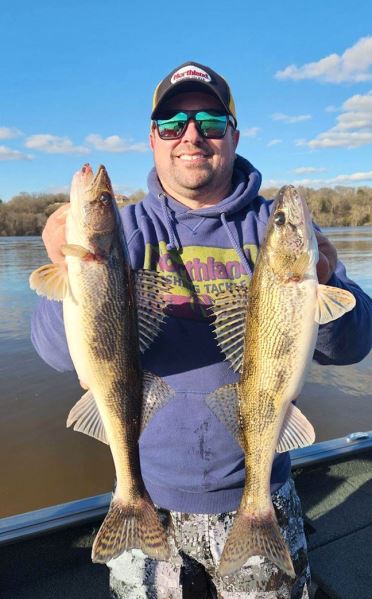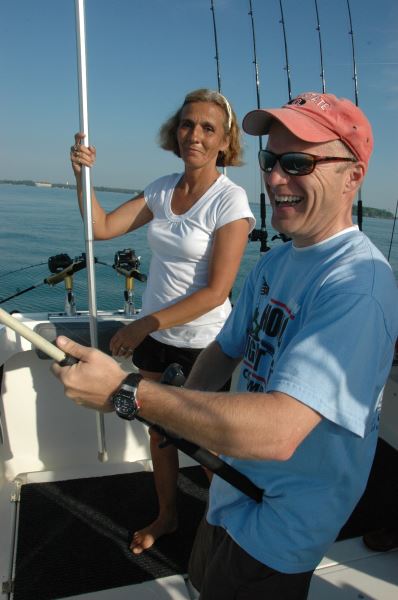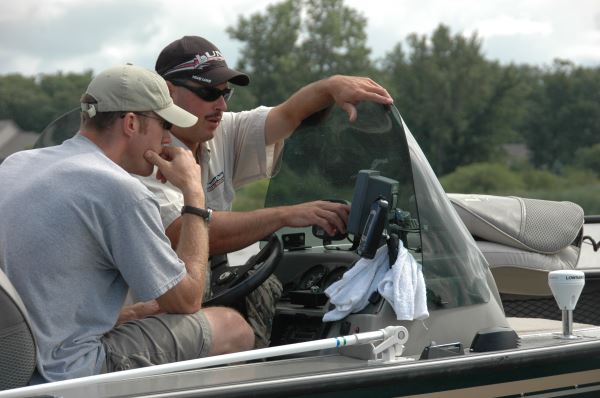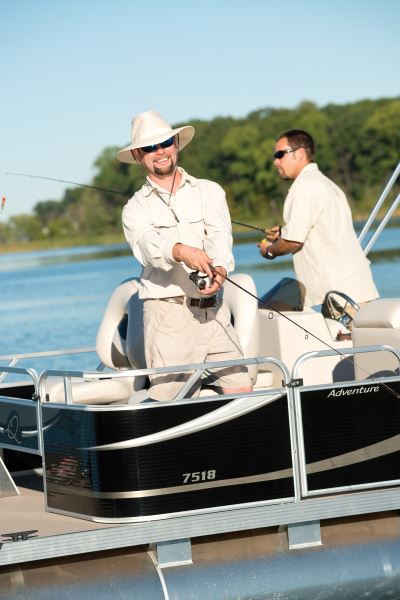 The first week of June is designated as National Fishing & Boating Week, and it’s no accident that the sixth month of each year is famous for being one of the most productive for anglers across North America hoping to hook a fish in fresh and salt water. Many states celebrate the designation by offering what are called *Free Fishing Days, when the game and fish authorities waive the requirement for adult residents to have a fishing license to legally wet a line in state waters. Other states’ agencies offer for purchase a single-day license throughout the season for adults who want to temporarily test the waters, with the cost reimbursed if the angler enjoys the activity enough to invest in an annual fishing license. Both strategies are in place in hopes of attracting more anglers – and therefore license buyers – into the fishing fold.
The first week of June is designated as National Fishing & Boating Week, and it’s no accident that the sixth month of each year is famous for being one of the most productive for anglers across North America hoping to hook a fish in fresh and salt water. Many states celebrate the designation by offering what are called *Free Fishing Days, when the game and fish authorities waive the requirement for adult residents to have a fishing license to legally wet a line in state waters. Other states’ agencies offer for purchase a single-day license throughout the season for adults who want to temporarily test the waters, with the cost reimbursed if the angler enjoys the activity enough to invest in an annual fishing license. Both strategies are in place in hopes of attracting more anglers – and therefore license buyers – into the fishing fold.
But a mere permit does not an angler make, and if you are lucky enough to have adult friends or family members who have expressed an interest in fishing you may be able to introduce someone into a lifelong activity that they will appreciate for years to come.
Or not, depending on that introduction.
I spend a good part of my time each winter traveling to sport and boat shows presenting a “Kids’ Fishing Fun!” program that attempts to get school-age kids interested in angling. I’ve raised a son to fish, and taught my share of adults how to catch fish as well, and while there is some crossover in their respective lesson plans, adults often require special handling to hold their interest in a sport over which you have limited control in terms of success.
 To non- or first-time anglers of any age, success is often measured by the number of fish flopping on the deck once the session ends. That’s especially true of young anglers, most of whom are as excited by hooking, fighting and landing a four-inch bluegill as they are a keeper bass. Not so with some grownups where size does seem to matter, especially if there is more than one adult male aboard the floating classroom. No matter what they may say, any two guys sharing a deck are going to try to out-fish each other – and size typically trumps quantity.
To non- or first-time anglers of any age, success is often measured by the number of fish flopping on the deck once the session ends. That’s especially true of young anglers, most of whom are as excited by hooking, fighting and landing a four-inch bluegill as they are a keeper bass. Not so with some grownups where size does seem to matter, especially if there is more than one adult male aboard the floating classroom. No matter what they may say, any two guys sharing a deck are going to try to out-fish each other – and size typically trumps quantity.
When trying to get a newcomer to appreciate angling, I always recommend pursuing the lowest-hanging fruit to keep the action – and their attention – alive. Across much of the nation, panfish are plentiful, easy to access, willing biters, decent fighters on lights tackle and taste great on the dinner table. And in June, the sunfish, crappies, and perch are at their most accessible and eager of the season, moving into shoreline shallows and structure to spawn and feed. And the larger predator fish of the system, such as trout, bass, pike and walleye, follow suit and can often be caught nearby by anglers who want to tangle with something larger than a pan-size bluegill.
When dealing with a novice angler of any age, I follow the KISS principle. I’ve discussed applying this to children in these pages in the past, but when it comes to adult anglers, I tweak the tackle tech a bit to hold their interest.
 For example, I’m more likely to hand a grownup a spin casting outfit than a simple cane pole rig for those first fishing attempts. I find that adults can quickly master the use of a reel and have an easier time with rod and line management than the younger anglers with whom I work with. I also am less likely to balk at the thought of those first fishing attempts coming from the deck of a boat rather than from shore, a tactic I promote among those who are instructing kids.
For example, I’m more likely to hand a grownup a spin casting outfit than a simple cane pole rig for those first fishing attempts. I find that adults can quickly master the use of a reel and have an easier time with rod and line management than the younger anglers with whom I work with. I also am less likely to balk at the thought of those first fishing attempts coming from the deck of a boat rather than from shore, a tactic I promote among those who are instructing kids.
Even aboard such fishing- and kid-friendly craft as our favorite pontoon and deck boats, youngsters need to run around a bit and may require more elbow room to enjoy themselves than your typical adult student. That makes shore fishing much more appealing in the early stages of fueling kids’ interest in angling, allowing them to run around, climb trees, throw rocks at geese, look for critters under rocks and logs, play with the bait – all the things that combine to make a fishing safari exciting, even when the catching isn’t so productive.
I also find that adults’ patience (typically…) far exceeds that of their offspring. When inviting a novice adult aboard my deck boat with the intention of wetting a line, I lead with, “Let’s go for a cruise” and work up to... “and maybe we can try a little fishing if the conditions look good.” It helps to hand them a beverage of their choice and offer a comfortable chair within reach of a rod holder when discussing the angling option.
 The less interested and/or active the neophyte adult anglers I have aboard appear to be, the more likely I am to introduce freshly minted fishers to the joys of drifting and trolling. Doing so eliminates the ever-present dangers of beginners trying to cast from a crowded deck, and allows me to select the bait or lure, the amount of line out, and all the other hands-on tasks required other than my hands actually being on the angler’s rod and reel. And by placing the rig in a rod holder, you don’t even need to count on your guest to tackle that task.
The less interested and/or active the neophyte adult anglers I have aboard appear to be, the more likely I am to introduce freshly minted fishers to the joys of drifting and trolling. Doing so eliminates the ever-present dangers of beginners trying to cast from a crowded deck, and allows me to select the bait or lure, the amount of line out, and all the other hands-on tasks required other than my hands actually being on the angler’s rod and reel. And by placing the rig in a rod holder, you don’t even need to count on your guest to tackle that task.
Allowing the boat to slowly drift with the current or the breeze, or proceed with push or pull of a motor, makes the angling as easy and stress-free as possible yet still reaps rewards for the angler seated nearest to the rod and reel that starts dancing in the bracket. By then you should have had time to explain to your student(s) the process of collecting (grabbing) the rig from the rod holder (hold on tight), reeling in (pump and reel), landing (slide the fish over the submerged landing net) so that your students are prepared for the fire-drill that follows a hook-up and all the fun that follows.

